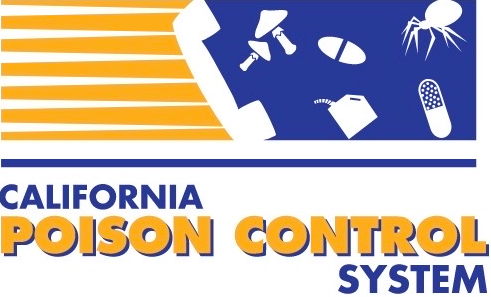Updated January, 2023 by Justin Seltzer, MD & Christian Tomaszewski, MD
Original author Christian Tomaszewski, MD
Introduction
As the U.S. population ages, increasing prescriptions for cardiovascular drugs are being written. Not only does this make these potentially lethal drugs more available for intentional overdose, but can also lead to more accidental ingestions, especially in children, with potentially devastating consequences. Unfortunately, calcium channel antagonists (CCA) poisonings are challenging to treat because of their profound, often difficult to reverse toxic effects. Treatment of CCA poisoning often requires multiple therapies, some of which are uncommonly used outside of CCA poisoning.
Case presentation
A 17-year-old female presented three hours after taking at least ten of her grandmother’s sustained-release verapamil 200 mg tablets. She presented to an emergency department, lethargic with a systolic blood pressure of 80 mmHg and a regular weak pulse of 56 bpm. Her pupils were 3 mm equal and reactive bilaterally. The bedside glucose was 340 mg/dl. ECG showed a narrow complex bradycardia consistent with third degree heart block.
She was given atropine 2 mg and one ampule of 10% calcium gluconate intravenously and placed on an external pacemaker without hemodynamic improvement. A second ampule of 10% calcium gluconate was given, again without hemodynamic response. Poison Control was contacted for further recommendations.
Questions
- What is the initial approach to stabilization and decontamination of a potentially lethal CCA overdose?
- What are the mechanisms for CCA toxicity?
- What other antidotes are available to treat CCA toxicity?
Epidemiology
CCAs in overdose are among the most dangerous cardiovascular drugs. Over 6,000 single agent exposures were reported to the American Association of Poison Control Centers in 2021, 119 of which resulted in major toxicity, with an additional 37 resulting in death. Further, many have a narrow therapeutic index and can cause severe toxicity following even small accidental ingestions by small children; for example, a single nifedipine pill has been reported to cause death in an infant.
Pathophysiology
There are two major classes of CCAs: dihydropyridines and non-dihydropyridines. The dihydropyridines are the “-pine” class of drugs, such as amlodipine and nifedipine. The non-dihydropyridines are verapamil and diltiazem. Therapeutically, dihydropyridines generally have a stronger peripheral vasodilatory effect and non-dihydropyridines have a stronger negative inotropic and chronotropic effect.
In overdose, CCAs regardless of class type become nonspecific calcium channel antagonists, causing cardiovascular collapse through blockage of both cardiac and peripheral vascular calcium channels. Cardiac calcium channels are responsible for excitation-contraction coupling and generation of the action potential in the sino-atrial node. CCA poisoning thus results in negative inotropic and chronotropic effects, profoundly depressing cardiac output. Peripheral blockade of calcium channels prevents smooth muscle contraction and thus vasoconstriction, directly resulting in peripheral vasodilation. These effects can combine to produce multi-factorial hemodynamic instability.
Further, CCAs also act as metabolic poisons, specifically by blocking pancreatic insulin release, which is also calcium channel mediated. During periods of severe cardiovascular stress, such as CCA poisoning, the heart switches from free fatty acid to carbohydrate-based metabolism. Unfortunately, despite increased need, CCA impairment of insulin release limits cellular glucose uptake and thus the ability of the heart to use the preferred energy substrate efficiently. This further contributes to cardiovascular and systemic toxicity.
Clinical presentation
The hallmark of CCA toxicity is hypotension with bradycardia. This bradycardia can develop into various forms of heart block, including sinus arrest with a ventricular escape rhythm. However, this presentation is not universal. For example, dihydropyridines may actually cause early reflex tachycardia early in response to peripheral vasodilatation before transitioning to generalized CCA toxicity.
Another classic clinical manifestation of CCA toxicity is hyperglycemia, due to impaired insulin release. Hyperglycemia is a helpful surrogate marker for both severity of poisoning and to help differentiate CCA from other bradycardia causing agents, such as beta blockers. Other findings, such as metabolic acidosis and altered mental status, are generally commensurate with the degree of shock and not specific to CCAs. Severe cases may be accompanied by cardiogenic pulmonary edema.
Diagnosis
The diagnosis of CCA poisoning is clinical and may be difficult if the ingested drug is unknown. As noted previously, the presence of otherwise unexplained hyperglycemia can be helpful to distinguish CCA poisoning from other, otherwise similarly presenting agents such as beta blockers, clonidine, and digoxin. Likewise, acute digoxin toxicity is typically accompanied by hyperkalemia. The absence of a discernible toxidrome, such as the cholinergic toxidrome produced by organophosphate and carbamate pesticides, is also helpful. However, there is no readily available laboratory testing for CCAs or highly specific surrogate markers.
ECGs in these poisonings usually demonstrate bradycardia, frequently accompanied by variable degrees of heart block. Unlike digoxin, CCAs otherwise have no characteristic rhythm abnormalities. Echocardiography will likely show globally decreased cardiac contractility, but no CCA specific echocardiographic findings have, as of yet, been described.
Treatment
For patients presenting early with an asymptomatic ingestion or for patients presenting following ingestion of a long-acting preparation, administration of activated charcoal can be useful, especially following poisoning with extended-release preparations. Similarly, extended-release preparations may benefit from whole bowel irrigation. However, the decision to administer activated charcoal and/or whole bowel irrigation should be balanced with the risk for aspiration, such as current mental status and active vomiting, as well as presence of contraindicating co-ingestants (ex. caustics) and likely clinical trajectory.
Those who have ingested an immediate release CCA and are asymptomatic should be monitored for 6 to 8 hours. Those who ingested an extended-release formulation should be monitored for up to 24 hours.
Intravenous fluids, atropine, pacing, chronotropic agents, and vasopressors are appropriate initial interventions for the treatment of bradycardia and hypotension, but may not adequately address severe CCA poisoning. In one series of CCA poisoned patients, less than half responded to atropine, cardiac pacing, or isoproterenol. Methylene blue can also be considered as an adjunct to vasopressors. Methylene blue is thought to exert therapeutic effect by blocking the vasodilatory effects of nitric oxide, thereby ameliorating the induced vasoplegia. It may also increase overall sensitivity to catecholamines. These agents are generally considered bridges and adjuncts to more CCA specific therapies, such as calcium loading and high dose insulin.
The traditional first line antidote for CCA toxicity is calcium loading, which may competitively reverse some of the calcium channel blockade. The bolus dose is one 10 ml ampule of 10% calcium chloride (or three ampules of 10% calcium gluconate). One to two bolus doses can be given initially over 5 to 10 minutes and repeated in 10 minutes if there is incomplete response to the initial calcium bolus, then as frequently as every 20 minutes after. As the hemodynamic effects of calcium loading are transient, a continuous infusion of 10% calcium gluconate at 0.6 ml/kg/hr, titrated to effect up to a rate of 1.2 ml/kg/hr (calcium chloride 10% 0.2 ml/kg/hr to maximum 0.4 ml/kg/hr) can be considered in lieu of repeat boluses. Dosing recommendations can vary by resource.
Calcium loading may result in significant hypercalcemia and calcium levels should be closely monitored, ideally every 30 to 60 minutes. Similarly, the patient should be closely monitored for symptomatic hypercalcemia. While an ideal target calcium concentration has not been established, some resources recommend an initial target serum calcium of 15 mg/dL or double the normal ionized calcium (approximately 2 mmol/L). High doses and serum calcium concentrations have been reported without major adverse effects, though mortality has been reported from iatrogenic hypercalcemia in this context. Calcium should also be given cautiously due to local tissue injury risk from extravasation. Calcium chloride is at highest risk for this and should be administered via central line. Calcium gluconate can be given through a peripheral line, though it can also cause local tissue injury if extravasation occurs, albeit generally less severely than calcium chloride.
High dose insulin therapy is another first line therapy for CCA toxicity that is frequently employed in addition to the aforementioned management strategies. While the mechanism of action is not well understood, it is thought that high dose insulin, in part, allows the heart to utilize carbohydrates more efficiently, thereby helping to increase inotropy and reverse the shock state. Importantly, insulin has no peripheral vasopressor qualities and in fact may have some vasodilatory properties. The typical starting dose for regular insulin is a bolus of 1 unit/kg, followed by an infusion of 0.5 to 1 unit/kg/hr that can be titrated to effect; no maximum infusion rate has been established, though some guidelines recommend a maximum infusion rate of 10 unit/kg/hr. Frequent (ideally every 30 to 60 minutes) blood glucose monitoring is imperative to detect early hypoglycemia. However, given the profound drug induced hypoinsulinemia associated with CCA toxicity, hypoglycemia is uncommon and empiric dextrose supplementation is usually unnecessary. Supplemental dextrose can be given as needed to maintain euglycemia. Close serum potassium monitoring is also essential though repletion beyond low-normal is not necessary as this hypokalemia is due to intracellular sequestration; aggressive supplementation may result in rebound hyperkalemia once the insulin effect has resolved. Note that a clinical response to high dose insulin can take approximately 30 minutes, so high dose insulin therapy should be initiated early for any patient presenting with CCA toxicity. Likewise, resolution of insulin effect may take several hours after discontinuation. Patients with waning CCA toxicity should be monitored closely for hypoglycemia.
Glucagon may also have a role in CCA toxicity. Glucagon can independently stimulate cardiac myocyte adenylate cyclase via the same pathway as beta adrenergic receptor stimulation, which is why it is the first line antidote for beta adrenergic receptor antagonist toxicity. This common pathway relies on downstream calcium channels, which are antagonized by the CCA, limiting the value of stimulating this pathway generally. However, like vasopressors, glucagon does demonstrate efficacy in the setting of CCA toxicity and therefore maintains a role as an adjunctive therapy. It is typically given at an initial dose of 2 to 10 mg (50 to 150 mcg/kg) for an adult. If a clinical response to the bolus is noted, this can be followed by an infusion of 0.05 to 0.1 mg/kg/hr. One should be cautious in patients with altered mental status because of glucagon-induced vomiting and the risk of subsequent aspiration. Additionally, hospital supplies of glucagon are usually rapidly exhausted at these high doses.
If the CCA toxicity remains refractory to the above therapies, additional therapies can be considered. Intravenous lipid emulsion (ILE) has limited evidence supporting its use for CCA toxicity, though case report and retrospective review level evidence suggests ILE may help reverse cardiotoxic CCA effects by an unclear mechanism of action. One hypothesis is that ILE simply functions as a “lipid sink,” extracting or sequestering lipophilic drugs intravascularly. Another hypothesis is that ILE may act as a metabolic antidote. CCAs are known to impair myocardial use of fatty acids, thereby shifting dependence to less efficient carbohydrates; administration of free fatty acids may improve myocardial function by shifting substrate utilization back to fatty acids. Finally, the free fatty acids may directly reverse CCA toxicity by reactivating cardiac calcium channels.
While the appropriate dose of ILE for treatment of CCA toxicity has not been established, general guidelines for ILE therapy recommend a 1.5 ml/kg (100 ml in an adult) bolus of 20% emulsion over one minute, which can be repeated up to twice more in 3 to 5 minutes intervals. The bolus dosing is followed by a 0.25 ml/kg/min infusion. The infusion rate can be doubled if hemodynamic instability persists. Once hemodynamic stability has been achieved, the infusion should be continued for approximately 10 minutes. FDA guidelines recommend no greater than 12.5 ml/kg in a 24-hour period when ILE is used for nutritional purposes (ex. TPN); no maximum dose has been firmly established for the use of ILE outside of this context. Complications associated with ILE therapy include ARDS, fat embolism, pancreatitis, deep vein thrombosis, and interference with laboratory studies.
For patients with shock refractory to the above measures, mechanical circulation with veno-arterial extracorporeal membrane oxygenation (VA-ECMO) should be considered. Several case reports have been published supporting the use of VA-ECMO for circulatory support for life threatening CCA overdoses not responding to other therapies. Current extracorporeal removal methods are ineffective and are not recommended.
Question Answers
- What is the initial approach to stabilization and decontamination of a potentially lethal CCA overdose? CCA toxicity is managed by treating cardiogenic shock. Aggressive up-front resuscitation and treatment of bradycardia, hypotension is essential. IV fluids, atropine, external pacing, glucagon, vasopressors, and chronotropic agents may help temporize a patient while calcium, high dose insulin, and other therapies are being arranged. Instillation of activated charcoal may be useful in early or sustained release overdoses; with the latter also potentially benefiting from whole bowel irrigation.
- What are the mechanisms for CCA toxicity? CCAs cause mixed cardiogenic and distributive shock via their negative inotropic and chronotropic effects along with systemic vasodilation. The mechanisms underlying this are a mixture of both receptor level and metabolic poisoning.
- What other antidotes are available to treat CCA toxicity? High dose insulin therapy and calcium loading are the primary antidotes of choice. Methylene blue and ILE may be beneficial in severe cases unresponsive to other therapies, though evidence for them is much more limited. Truly refractory cases may ultimately require circulatory support with VA-ECMO. Unfortunately, no extracorporeal removal methods are known to be effective for CCA toxicity.



